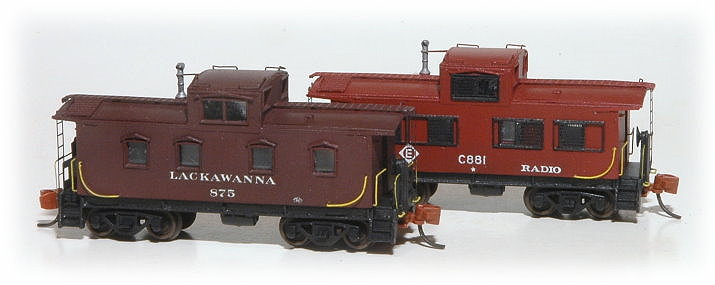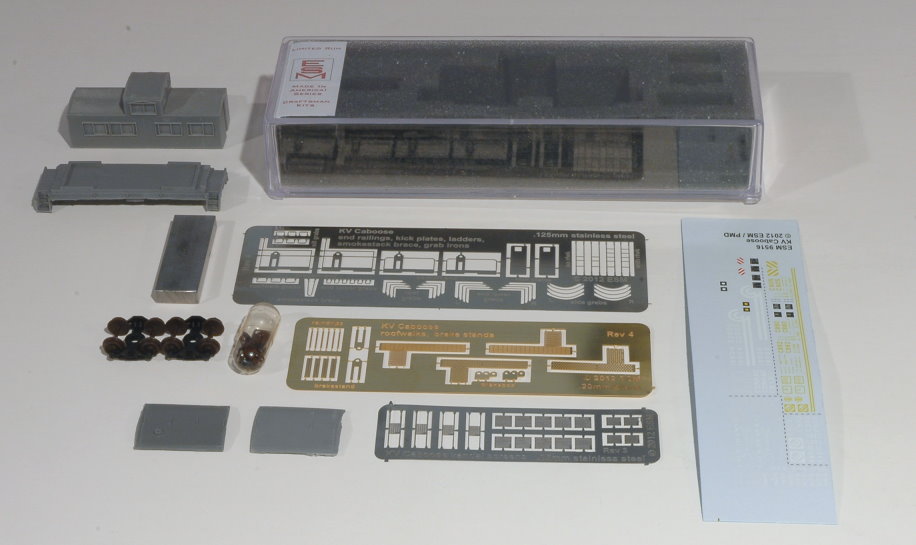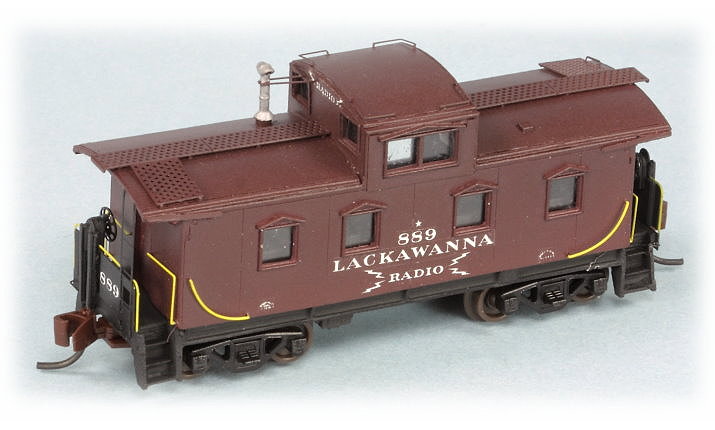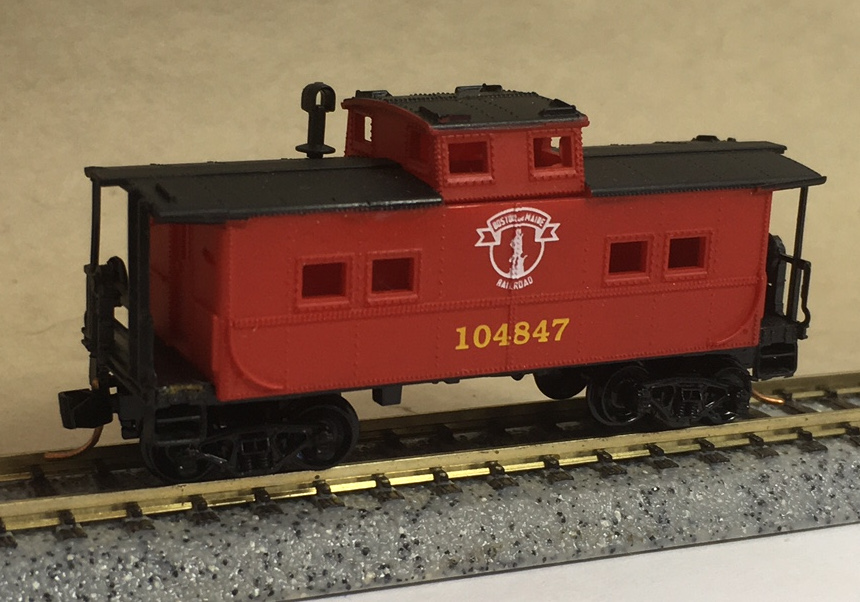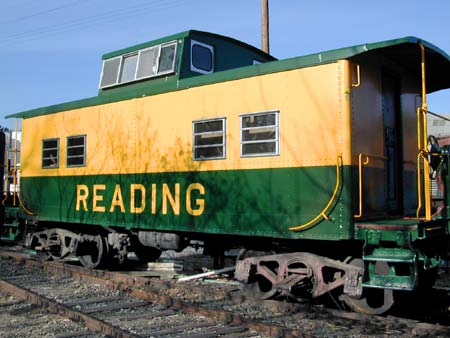Specific Item Information: With 60 cars built in the company's Keyser Valley plant in Scranton, Pennsylvania between 1948 and 1954, this aptly-named design became the signature caboose of the Lackawanna Railroad. Constructed on repurposed tender frames, these cabooses survived well into Conrail.
This kit contains polyurethane resin body, roofs and floor/underframe; etched brass and stainless steel detail parts; steel weight; Atlas leaf-spring friction-bearing trucks and wheelsets; Micro-Trains® smoke stack, Ajax brakewheels and #2001 couplers; Evergreen clear styrene for the windows; and decals with assorted railroads and schemes.
This kit contains polyurethane resin body, roofs and floor/underframe; etched brass and stainless steel detail parts; steel weight; Atlas leaf-spring friction-bearing trucks and wheelsets; Micro-Trains® smoke stack, Ajax brakewheels and #2001 couplers; Evergreen clear styrene for the windows; and decals with assorted railroads and schemes.
Model Information: This body style was announced in 2016 and first delivered in December of 2017. The tooling was categorized by Atlas as part of their Master® line of products. The model is fairly pricey for what you get. As a Master® product one would expect a lot of detail as well as premium components. While it does have some detail parts such as a smokestack, ladders and applied roofwalk, the handrails are molded and the stirrups are kind of fat for a 2017 vintage tooling. The lack of metal wheels is a total (bad) surprise as we have come to expect better of the Master line. Heck! Even the most recent Trainman trash cars have metal wheels.... The body mount couplers are nice to see, but for such a new model this is expected. Lastly, the assembly quality is deficient; the first model I examined had its smokestack improperly glued on. Without the good wheels or interesting detail parts, this is a sad attempt at a 3rd generation model.
Features: Finely detailed end rails, smokestack and ladders; Brake line detail; Weighted chassis; Friction-bearing or roller-bearing caboose trucks as appropriate; Accurate painting and printing.
Features: Finely detailed end rails, smokestack and ladders; Brake line detail; Weighted chassis; Friction-bearing or roller-bearing caboose trucks as appropriate; Accurate painting and printing.
Prototype History: The Northeast or NE style caboose was introduced by the Reading Railroad in 1924. The design was an all-steel version of a USRA design. The acquisition of these new cabooses was prompted by proposed Pennsylvania legislation requiring larger, more structurally sound caboose for use in through freight consists. The original set of cabooses was ordered from AC&F, but other manufacturers also adopted similar designs.
The Reading selection was made after the consideration of several designs. The original purchase was for 10 cars in 1924, but the design was so effective that it became the de-facto Reading standard and they continued purchasing new cabooses of this type through 1948. The design soon became popular with other Northeastern railroads such as the WM, L&NE, LV, CNJ and others.
The Reading selection was made after the consideration of several designs. The original purchase was for 10 cars in 1924, but the design was so effective that it became the de-facto Reading standard and they continued purchasing new cabooses of this type through 1948. The design soon became popular with other Northeastern railroads such as the WM, L&NE, LV, CNJ and others.
Road Name History:  Although they may be molded in color, unpainted and unlettered, undecorated products are marketed to modelers who seek to custom decorate their models for private roads and/or road and/or company names that were not commercially produced by any of the major manufacturers.
Although they may be molded in color, unpainted and unlettered, undecorated products are marketed to modelers who seek to custom decorate their models for private roads and/or road and/or company names that were not commercially produced by any of the major manufacturers.
Undecorated models are frequently also unassembled or only partially assembled and required modelers to be comfortable with glue, paint and sometimes solder in order to prepare their models for display. Materials for these models can vary but often include plastic, pewter and resin. Models may or may not come with decals or other decorations such as plastic signage, railings and ladders to enhance the appearance of the final product.

Undecorated models are frequently also unassembled or only partially assembled and required modelers to be comfortable with glue, paint and sometimes solder in order to prepare their models for display. Materials for these models can vary but often include plastic, pewter and resin. Models may or may not come with decals or other decorations such as plastic signage, railings and ladders to enhance the appearance of the final product.
Brand/Importer Information: Eastern Seaboard Models was founded in 1987. They are a manufacturer of N scale reproductions of North American eastern railroad prototypes. The have both decorated other manufacturers' models as well as designed body styles of their own. They are located at PO Box 301, Waldwick, New Jersey 07463-0301 U.S.A.
Their 2016 lineup includes ready-to-run gondolas, well cars, hoppers, tank cars and boxcars. They also produce craftsman quality kits in their "Made in America" series. ESM products may be purchased directly from their website.
Their 2016 lineup includes ready-to-run gondolas, well cars, hoppers, tank cars and boxcars. They also produce craftsman quality kits in their "Made in America" series. ESM products may be purchased directly from their website.
Item created by: CNW400 on 2020-07-30 17:48:42
If you see errors or missing data in this entry, please feel free to log in and edit it. Anyone with a Gmail account can log in instantly.
If you see errors or missing data in this entry, please feel free to log in and edit it. Anyone with a Gmail account can log in instantly.


